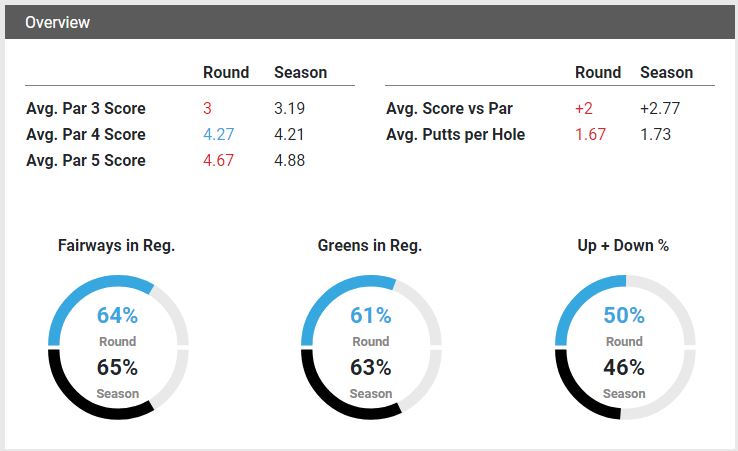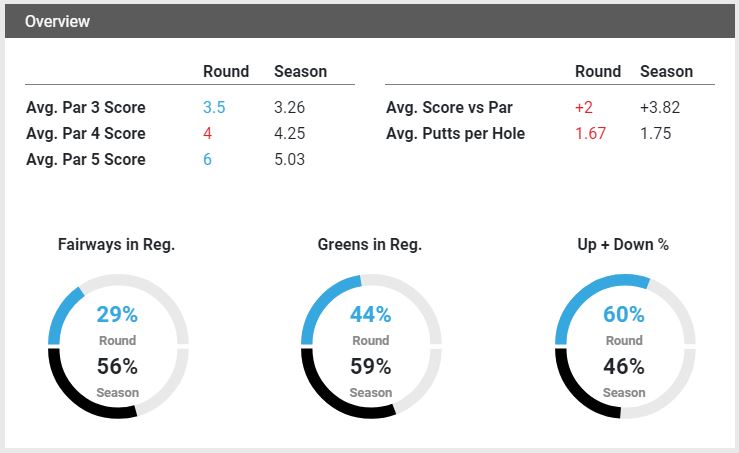From year to year, golfers can see big swings in their handicap. With those kinds of changes, players can pretty well tell if they're getting better or regressing.
However, when golfers see relatively small changes in their handicap and scoring average, it's harder to figure out what's going marginally right or marginally wrong.
That's where Shot Scope can help a golfer figure out what's going on and what to fix.
Russ is a club golfer who typically plays his golf out of the same club. He tracks his rounds using Shot Scope. He's definitely a good player. In 2018, Russ averaged 2.77 strokes over par per 18-hole round. This year, however, Russ hasn't been as strong of a player. He's average 3.82 strokes over par per round.

Looking at Russ' 2018 data against his 2019 play, there's one big standout: par-5 performance. In 2018, Russ was averaging better than par on the par 5s, coming in at 4.88 strokes per par 5. This year, he has shot up to 5.03 strokes per par 5 played -- the biggest jump in his scoring average compared to par 3s and par 4s. Taken over a round, those 0.15 strokes per par 5 amount to 0.6 strokes per round, or the biggest chunk of his increase.

So what explains his scoring woes on the longer holes?
Shot Scope tells us one of the clearest changes year-over-year is how often Russ finds the fairway. Last year, he was hitting 65 percent of his fairways. This year, he's at 56 percent. Not finding as many fairways off the tee makes it harder to reach a par 5 in two and even makes it more difficult to layup to a comfortable number.
The struggles off the tee have led to a slightly small drop-off in GIR (greens in regulation) performance. Russ is hitting 59 percent of greens in regulation in 2019 compared to 63 percent the season prior. Since he's getting up-and-down at about the same clip as last year, and he's averaging approximately the same number of putts per hole, his problem is clear.
Russ is finding just enough fewer greens per round, particularly on par 5s, that are putting more pressure on his short game. Russ didn't respond by improving his up-and-down percentage, so he's coming up with an extra shot or two on the scorecard here and there.
Overall, Russ in 2019 is pretty close to the same golfer he was in 2018. However, these small differences in his performance have led to him turning in higher scores. If he emphasizes driving accuracy and fairway proximity in his practice, Russ should be able to get in 2020 back to where he was in 2018.

